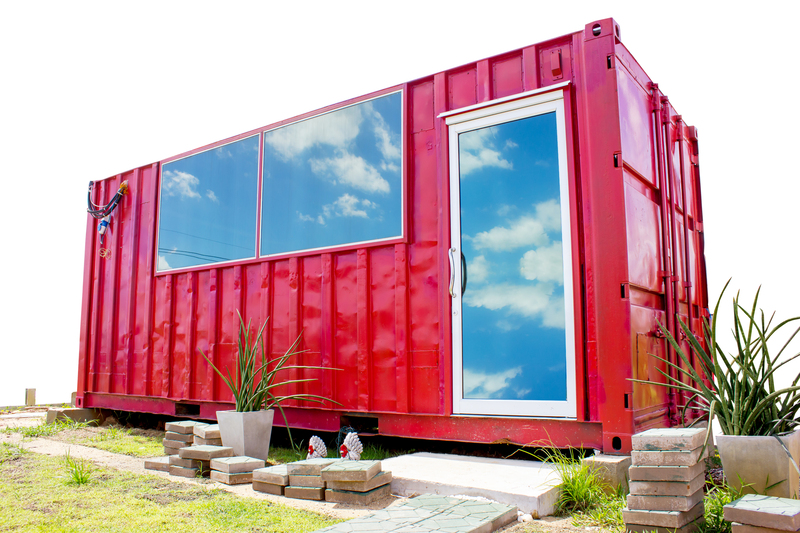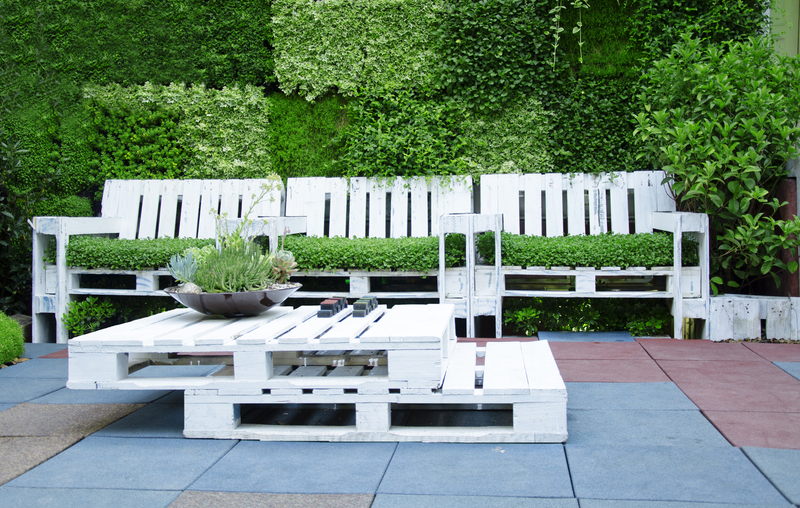Rethinking Packaging: Creative Cardboard Disposal Practices
In a world driven by e-commerce and retail, packaging--especially cardboard--is everywhere. From online shopping deliveries to supermarket shelves, cardboard boxes are integral to modern logistics. But once the box is opened, its purpose seems fulfilled--or is it? As we strive towards sustainability, it's time to rethink how we dispose of packaging. Welcome to the era of creative cardboard disposal practices, where eco-friendly solutions meet ingenuity and purpose.
Why Rethink Cardboard Packaging?
Cardboard packaging is lauded for being recyclable, but vast amounts still end up in landfills. Global waste statistics highlight that not all cardboard makes it back into the recycling loop, which contributes to significant environmental impact. By reconsidering how we handle used packaging, we can transform potential waste into resources.
- Environmental Responsibility: Reducing landfill pressure and conserving resources.
- Economic Value: Creating cost-effective solutions and sometimes even profit from creative reuse.
- Innovation: Turning waste streams into opportunities for art, practical solutions, or business ideas.
Key Environmental Impacts of Cardboard Waste
Cardboard, if not disposed of thoughtfully, contributes to deforestation, increases greenhouse gas emissions during decomposition, and creates unnecessary landfill use. Although made from renewable materials, the production process is water and energy intensive, making creative cardboard disposal both an environmental necessity and a societal responsibility.

Standard Cardboard Disposal Methods
Before diving into innovative practices, let's briefly review traditional methods:
- Recycling: Breaking down cardboard into pulp and remanufacturing new products. Widely available but still underutilized.
- Composting: Cardboard as a brown material adds carbon to home composts, but it must be uncontaminated and shredded.
- Landfilling: The least sustainable; often a result of improper sorting or contamination.
Creative Cardboard Disposal and Repurposing Ideas
Now, let's explore some of the most innovative cardboard disposal solutions available today. These practices challenge our perceptions and benefit both communities and the planet.
1. Upcycling Cardboard for Home and Office
- DIY Storage Solutions: Transform large boxes into drawer dividers, organizers, or shelving units. Just cut, fold, and decorate for unique, custom-made solutions.
- Creative Furniture: Design lightweight stools, side tables, or even a pet house using strong, layered cardboard. Many design enthusiasts share patterns and tutorials online.
- Decorative Arts & Crafts: Cardboard is the perfect canvas for making wall art, masks, or festive decorations. This extends its life and sparks creativity in children and adults alike.
2. Cardboard in Gardening and Agriculture
- Sheet Mulching: Lay flattened cardboard over garden beds to suppress weeds and retain moisture, breaking down naturally over time and enriching the soil.
- Compost Additive: Shred clean, non-waxy cardboard to balance the carbon in your compost bin. It pairs well with food scraps to create nutrient-rich compost.
- Creative Planters: Short-lived but effective, cardboard boxes can be used as biodegradable seed starters or planters for a season.
3. Community and Educational Projects
- Art Installations: Many artists and community organizations use reclaimed cardboard to create large-scale sculptures or interactive installations, raising environmental awareness.
- Education Tools: Schools use cardboard for science models, prototypes, or classroom displays. It's safe, low-cost, and encourages hands-on learning.
- Cardboard Furniture for Events: Temporary fixtures, stages, or signage are increasingly being made from sturdy, recycled cardboard for festivals and local gatherings.
4. Cardboard as Business Solutions
- Packaging Return Programs: Some companies now offer closed-loop systems where used shipping boxes are returned, sanitized, and re-circulated--dramatically lowering waste.
- Shipping Box Second-life Platforms: Online initiatives like "BoxCycle" or "Freecycle" help people pass on gently-used boxes, keeping them in circulation longer.
- Custom Reusable Packaging: Startups upcycle cardboard into custom, reusable mailers or displays for local retailers and artisans.
How to Prepare Cardboard for Reuse or Recycling
Proper preparation prolongs the life and usability of cardboard. Here's how you can get your packaging ready for creative disposal or recycling:
- Remove Tape, Staples, and Labels: These can hinder recycling and reuse. Peel off where possible.
- Flatten Boxes: Saves space and makes transportation easier, whether to a recycling center or next creative project.
- Keep Dry and Clean: Wet or food-stained cardboard cannot be recycled and is less desirable for upcycling.
- Shred for Compost or Craft: Use a paper shredder to turn boxes into compostable material or packing filler.
Case Studies: Inspirational Cardboard Repurposing Projects
Cardboard Bikes and Emergency Shelters
Innovative minds have developed functional bicycles and even temporary emergency housing from cardboard. Israeli inventor Izhar Gafni's cardboard bike is strong, water-resistant, and made almost entirely from recycled boxes. Emergency shelters assembled from pre-cut cardboard panels have provided comfort to disaster victims worldwide--quick to construct, light to transport, and fully recyclable.
Cardboard in Art and Public Spaces
From Australian artist Chris Gilmour's life-sized sculptures to pop-up museums and eco-exhibitions, cardboard transforms public spaces and sparks conversation. Its versatility lets artists create large, yet eco-friendly, installations that inspire viewers to reimagine our waste.
Business Innovations: Return and Reuse Programs
Retail giants and e-tailers are piloting creative take-back schemes for packaging. For example, Zalando in Europe encourages customers to return delivery boxes for reuse, saving costs and significantly cutting waste. Small local businesses encourage customers to return boxes, often with incentives.
Barriers to Widespread Creative Cardboard Disposal
While creative cardboard disposal solutions are gaining popularity, a few challenges remain:
- Awareness: Many people are unaware of innovative options beyond recycling or binning boxes.
- Contamination: Food or chemical stains make some packaging unsuitable for upcycling and recycling.
- Space Limitations: Not everyone has the room to store or repurpose bulky boxes.
- Convenience: Recycling centers may be distant, and participation in return programs isn't always easy.
Future Trends in Cardboard Packaging and Disposal
As technology advances and society demands more sustainable practices, here are the emerging trends shaping the future of cardboard packaging and its disposal:
Smart Packaging
Integration of QR codes or RFID chips for easy tracking and return of boxes is on the rise. Soon, packaging could remind you--in real time--how to dispose or reuse it, or even earn rewards.
Biodegradable Coatings
New water-resistant coatings for cardboard use plant-based waxes, eliminating plastics and making composting far easier.
Collaborative Upcycling Platforms
Apps and websites connect individuals, schools, and artists who need boxes or material for projects with those who have an excess, fostering a sharing economy for packaging.
How You Can Make a Difference
Every small action counts in the journey towards sustainable packaging. To embed creative cardboard disposal into your lifestyle:
- Get Inspired: Search for upcycling ideas and try one new project this month.
- Support Return Programs: Choose brands that offer packaging return or reuse schemes.
- Educate Peers: Share your knowledge and experiences in your community or on social media.
- Advocate For Change: Encourage local retailers and schools to adopt cardboard repurposing projects.

Conclusion: Towards a Circular Cardboard Economy
The challenge of packaging waste is also an opportunity to innovate. By embracing creative cardboard disposal practices, we not only preserve the environment but also drive community ingenuity and economic benefit. Whether you're a business, artist, teacher, gardener, or simply a conscious consumer, rethinking how you handle cardboard has the power to shape a more sustainable future. The next time you open a delivery, remember: it's more than just a box--it's the first chapter in a story of renewal, creativity, and responsibility.
Frequently Asked Questions about Creative Cardboard Disposal
-
What types of cardboard cannot be recycled or upcycled?
Cardboard contaminated with food, grease (like pizza boxes), excessive tape, or chemicals may not be suitable for recycling or most upcycling projects. -
Do I need to remove all tape and labels before recycling?
While small amounts are accepted at recycling centers, for best results--especially in home projects--remove as much as possible. -
Is composting cardboard safe for my garden?
Yes, as long as the cardboard is unwaxed, free from synthetic dyes/inks, and is shredded into small pieces. -
Where can I find local upcycling or box return programs?
Start by checking online community platforms, social media groups, or local zero-waste organizations in your area.
By transforming our approach to packaging, we help build a cleaner, more creative world--one box at a time.